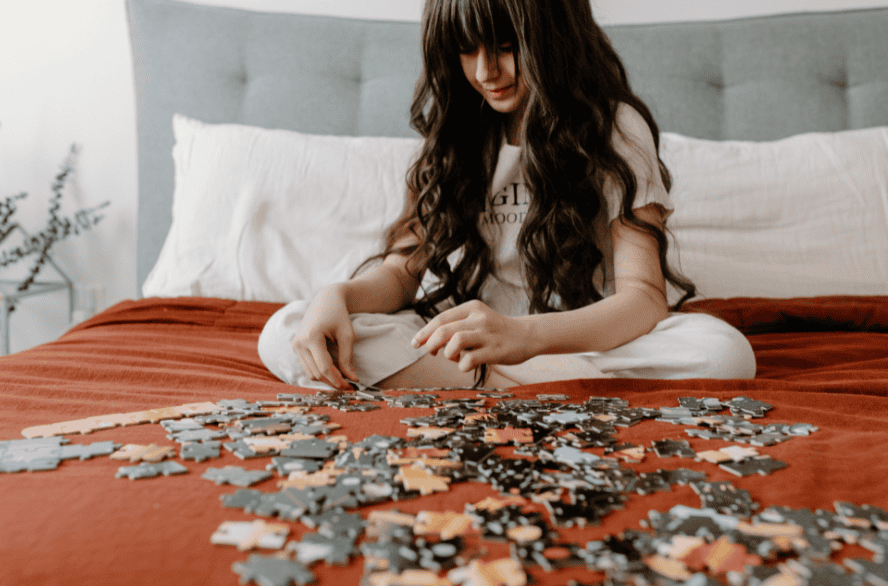The Hidden Curriculum of Puzzles – Unlock 3 Pro Tips
When children sit down with a puzzle and spread out all the pieces, it may look like a chaotic mess. But very quickly, a process kicks into action. Their brains become highly engaged, drawing on math, literacy, science, and more. In this respect, puzzles are more than just play. Beneath this seemingly simple activity lies a powerful hidden curriculum.
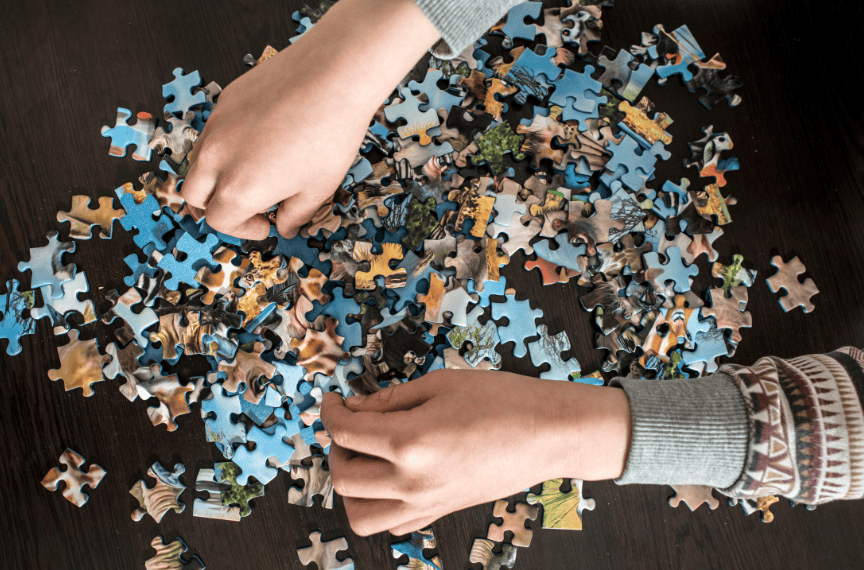
The key is to see puzzles not only as toys, but as gateways to discovery. With a little guidance, puzzles become tools for storytelling, math exploration, scientific observation, and social learning, all while maintaining the joy of play.
1. Math: Shapes, Patterns, and Problem-Solving
What’s the first thing you do when you dump out the contents of a puzzle box? You sort, categorize and strategize. Everyone has their favorite method. Maybe you group colors together (visual discrimination), find the edge pieces first (strategizing), or gather pieces for each section of the picture (understanding parts of a whole). Whatever your method, this is your math brain at work.
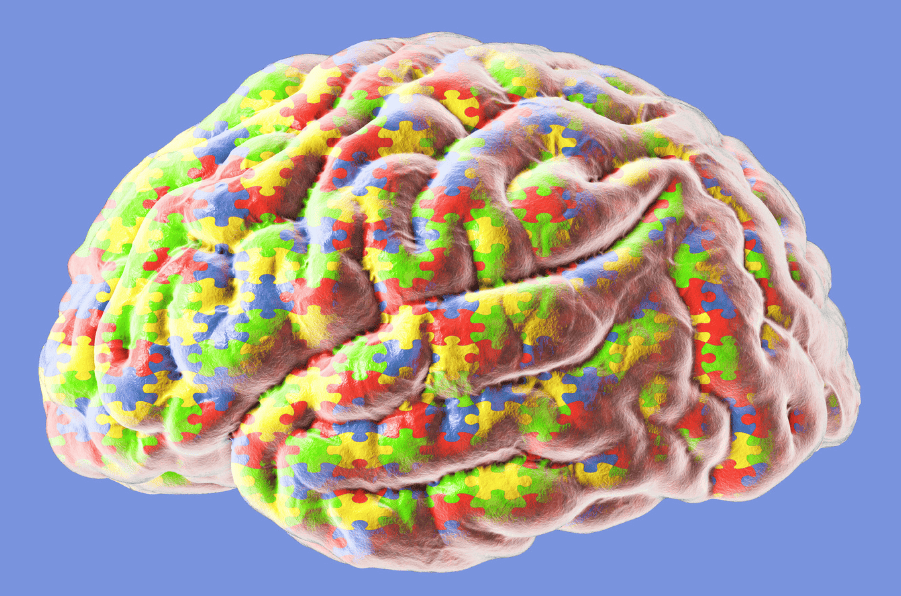
Your little mathematicians are doing the same. The children are busily identifying shapes and testing to see which ones fit together. Are there flat edges, symmetry, or recognizable shapes that they can already name? Identifying shapes, symmetry, and familiar patterns is early geometry.
Children can practice counting by sorting piles of pieces and comparing quantities. Are there more sorted colours than sorted shapes? How many pieces are left to sort? Older children can even sort pieces into groups of ten to see how many tens make up the whole puzzle as a playful way to introduce place value, fractions and base 10 concepts.
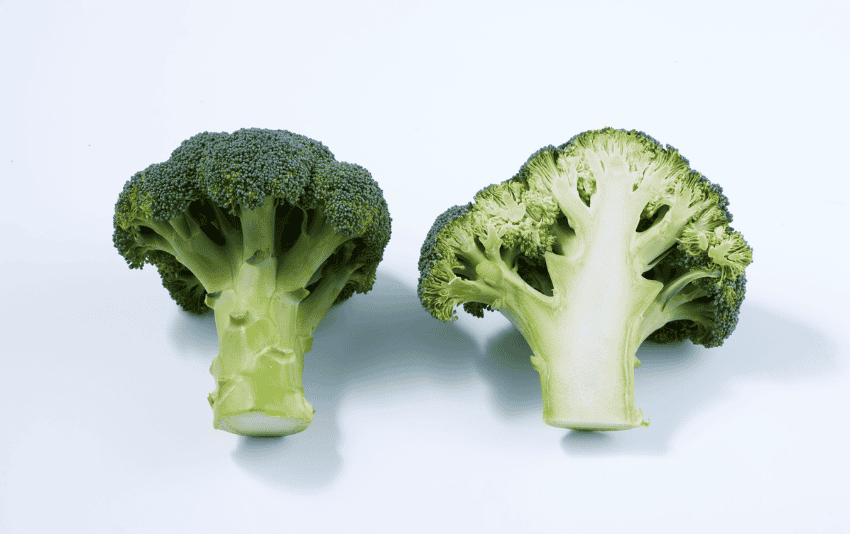
These simple activities build number sense in a fun, non-stressful way. And just like broccoli unfairly earned a reputation as the “vegetable nobody likes,” math can get a bad rap. But when children encounter numbers and patterns joyfully through puzzles, they develop a healthier, more positive relationship with math.
2. Fine Motor Skills and Executive Function
As little fingers flip, turn, and rotate puzzle pieces, children strengthen fine motor skills and the pincer grip which prepares them for writing, drawing, and using utensils.
At the same time, puzzles exercise executive function skills:
- Working memory: remembering where a piece was seen and recalling its color or shape.
- Focus and attention: ignoring distractions and persisting with the task.
- Planning and sequencing: organizing pieces, testing fits, and adjusting strategies.
- Cognitive flexibility: rethinking an approach when a piece doesn’t fit.
- Self-regulation: practicing patience, persistence, and perseverance.
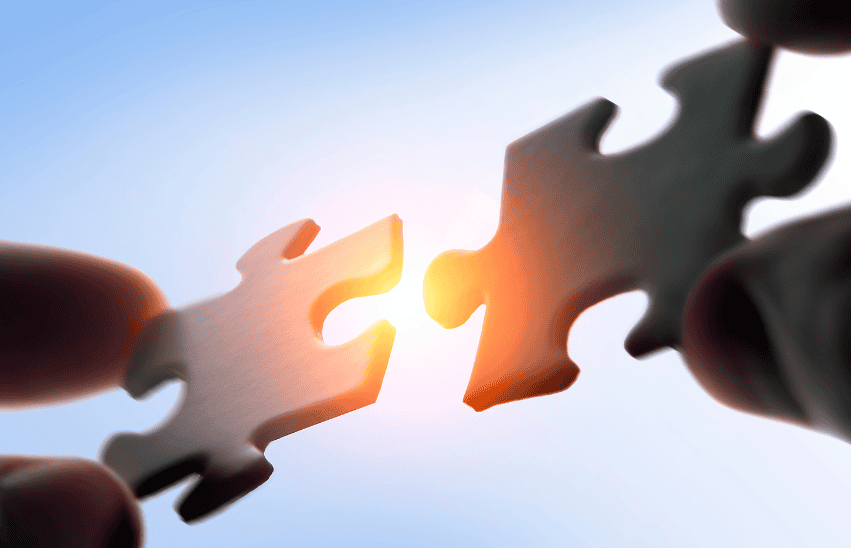
Piece by piece, through trial and error, puzzles help children build the concentration and resilience they will carry into every area of life.
3. Language and Literacy: From Words to Stories
The picture or image the puzzle constructs is more than just decoration, it’s a springboard into storytelling and literacy.
Even before beginning to sort any pieces you can chat about the image on the box:
- Is it an animal?
- Where does it live?
- What does it eat?
- Or if it is artwork, explore the artist, the style, and their story
- What is the name of the artist?
- What country are they from?
- What kind of art is represented?
Afterwards try doing some artwork inspired by the artist’s style. Or encourage your child to make up their own story about the animal in the scene.
Maybe the animal is actually in the scene… Felix, get out of the box!
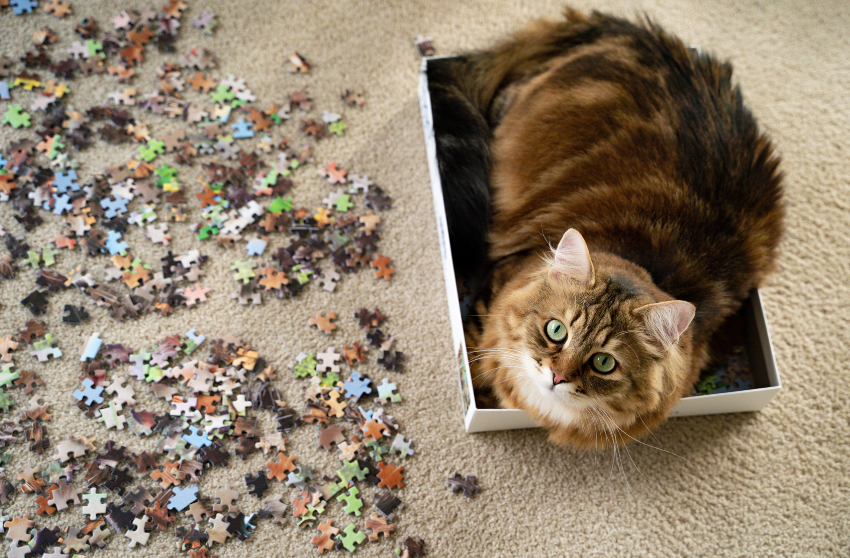
Puzzle themes also offer endless opportunities for vocabulary growth:
- Highlight key words, practice spelling, or write them down.
- Use phonics or sight words connected to the image.
- Encourage descriptive language about colors, textures, or actions.
All of these mini lessons are powerful tools for vocabulary growth shaping the child’s pathway to literacy. Engaging children with a puzzle image that excites them makes the hidden learning that much more powerful, longer lasting an interesting. Remember the hack of sneaking in an extra serving of vegetables in zucchini muffins or carrot cake for the picky eater? Similarly, you can stealthily sneak in a literacy lesson bomb by engaging with your child’s favorite farm animal puzzle. Who knew!

I’ll always remember when my four-year-old, who had been practicing letter sounds phonetically in his Montessori Casa class, had his “lightbulb moment.” As we pulled into a parking lot, he looked at the car next to us and suddenly exclaimed, “Juh–e–puh… Jeep!” That spontaneous discovery was pure joy. Puzzles can spark these same literacy “aha” moments when tied to a child’s favorite themes, like farm animals, cars, or dinosaurs.
Whole-Brain Engagement
Puzzle work draws on both the logical, analytical left brain and the spatial, creative right brain. Add in the secret sauce, that of choosing puzzles with subjects that genuinely excite your child, and the intrinsic motivation grows. Learning outcomes unfold effortlessly, disguised in the joy of play.
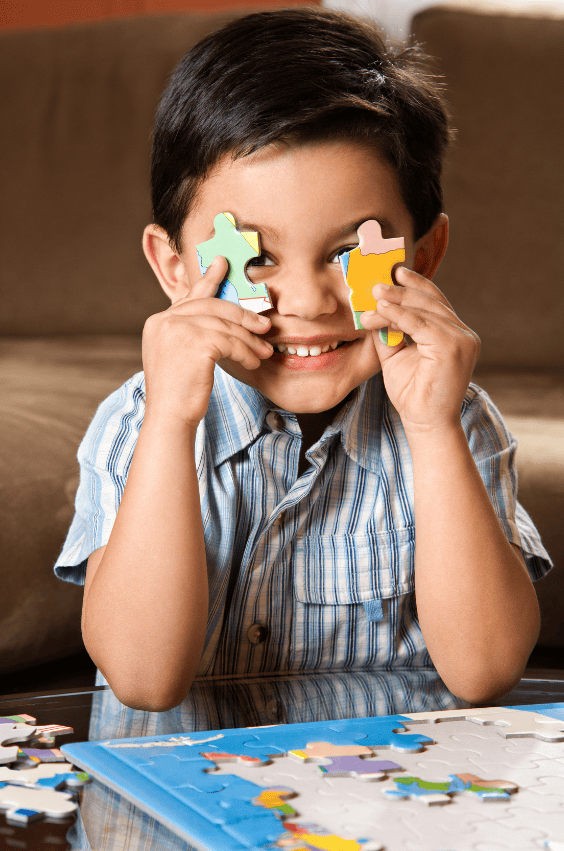 The hidden curriculum of puzzles is a multidisciplinary powerhouse that enriches multiple learning domains. Puzzles teach children persistence, problem-solving, and a love of discovery. Piece by piece, puzzles build not only a picture but also confident, curious learners.
The hidden curriculum of puzzles is a multidisciplinary powerhouse that enriches multiple learning domains. Puzzles teach children persistence, problem-solving, and a love of discovery. Piece by piece, puzzles build not only a picture but also confident, curious learners.
What’s your new favourite puzzle?

